Why Landscaping Shouldn't Follow Trends
February 11, 2025
A Timeless Approach to Outdoor Design
When it comes to landscaping, we’ve all seen the flashy trends that come and go. While it's tempting to embrace the latest craze, we believe that landscaping should be timeless and elevate your home for years to come. At Alfresco, our goal is to create landscapes that thrive continually, rather than follow short-lived trends that could quickly look outdated.
In this post, we’ll explain why landscaping trends can cause more setbacks than benefits, how your outdoor space can benefit from a timeless design approach, and why selecting a style that complements your home’s architecture is the best long-term strategy.
Landscaping Trends
Landscaping trends are often inspired by popular aesthetics, seasonal influences, or even social trends. One year, it's all about natural areas, the next, it's the return of cottage gardens. While these trends can be exciting and eye-catching, they often don't mature well over time.
The issue with landscaping trends is that they tend to define a specific moment in time. What’s "in" now can easily become "out" later, leaving homeowners with an investment into their landscape that looks outdated sooner than expected. As these trends cycle out of fashion, it can be costly to update your yard every few years to stay on top of what’s popular.
Our Recommendation
At Alfresco, we take the climate, your preferences, and your home architecture into consideration to create a design that will flourish and mature in ways that elevate your home. For example, when designing for West Michigan’s climate, evergreen plantings that can weather the seasons without losing all their color, texture, and shape that enrich the space. Additionally, native plants such as allium, lavender and black-eyed Susans are well-suited to our region’s growing conditions so we would lean towards using those plants rather than following trends. It's our goal to create a landscape that doesn't just look good right now – it will continue to look beautiful and thrive for many years to come.
Instead of chasing trends, consider these tips for designing a landscape that will stay beautiful for years to come:
- Incorporate Timeless Design Elements: Stick to classic garden features like stone pathways, classic fences, and planting schemes that never go out of style.
- Consider Your Home’s Architecture: Choose plants and features that complement the look and feel of your home, ensuring the outdoor space feels cohesive and elevates the look of your home.
- Think Long-Term Maintenance: Choose plants that are well-suited to your environment. This will save you time and money in the future.
Landscaping should never be just about following trends. It should be about creating an outdoor space that lasts, grows with you, and enhances the beauty and function of your home for years to come. By focusing on timeless design, sustainability, and thoughtful planning, you can build a landscape that feels as relevant and beautiful in the future as it does today.
Ready to create a timeless landscape that complements your home and thrives for years? Contact us today
for a consultation! Whether you’re starting from scratch or upgrading your current space, Alfresco can help you design an outdoor space that fits your style and your needs.
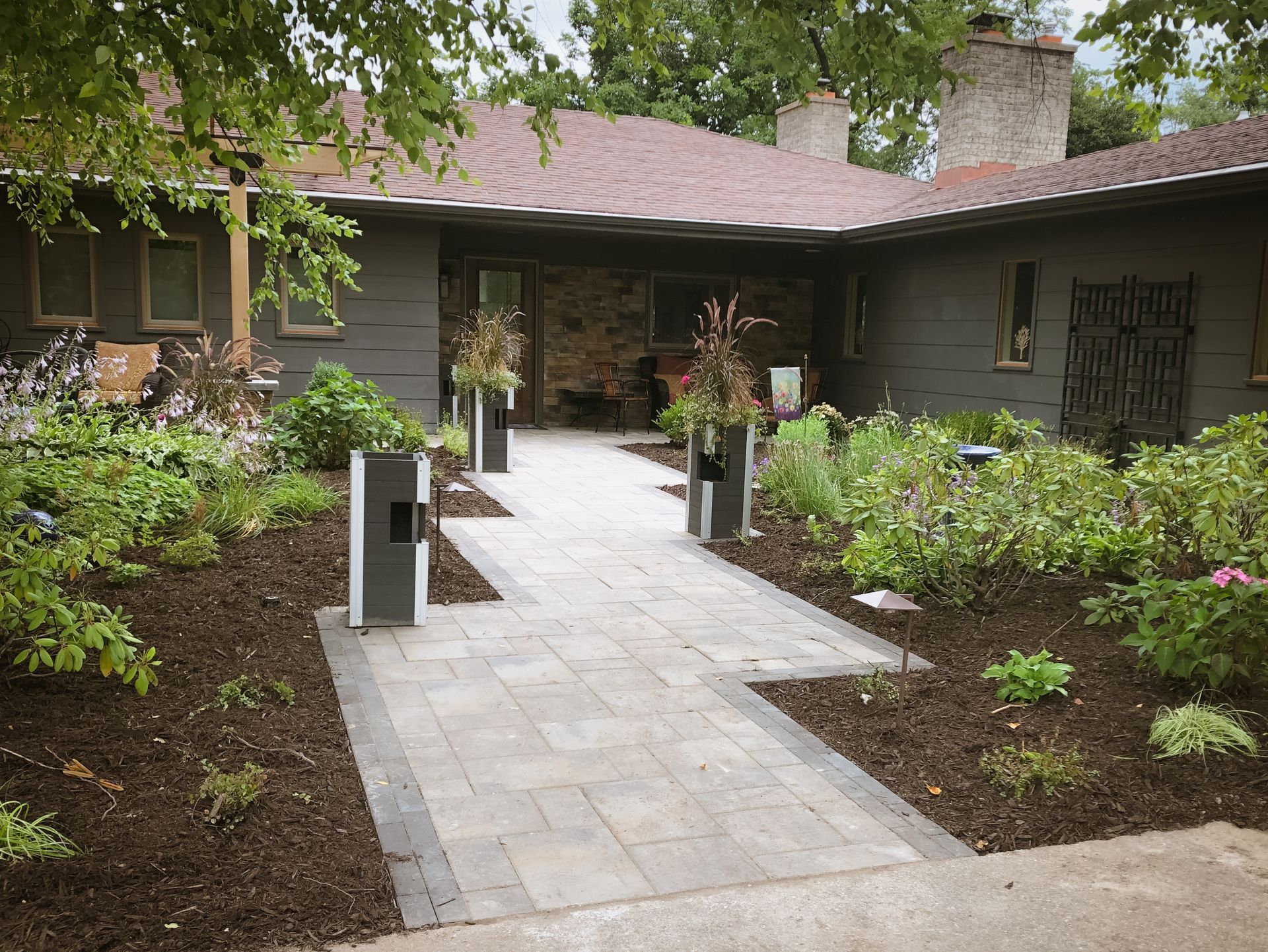
When it comes to creating a beautiful and sustainable landscape, the choice of plants plays a major role. While the variety of options can be overwhelming, opting for native plants can offer long-lasting benefits that go beyond aesthetics. Native landscaping is a growing trend that’s not only visually appealing but also ecologically responsible. It’s a choice that aligns with a desire to reduce water consumption, lower maintenance costs, and support local ecosystems - making it a win for both the environment and your property’s value. What is Native Landscaping? Native landscaping involves using plants that are naturally found in a specific region or ecosystem. These plants have evolved over centuries to thrive in the local climate and soil conditions, which makes them well-suited for their environment. In West Michigan, native plants are particularly beneficial because they’re adapted to the area’s unique weather patterns, soil types, and natural ecology. Unlike non-native species, native plants don’t require extra resources to grow and are typically more resistant to local pests and diseases. The Advantages of Choosing Native Landscaping 1. Water Conservation One of the most significant benefits of using native plants is their water efficiency. Native species are adapted to the local climate and can typically thrive with minimal irrigation once established. This is especially important in Michigan, where rainfall can vary throughout the year. Native plants require less supplemental watering during dry spells, which can help reduce your water bill. 2. Reduced Maintenance A beautiful landscape should be easy to maintain, and native plants are designed to thrive in the conditions that your property offers. They typically need fewer pesticide and fertilizer treatments than non-native species. This reduces the number of maintenance trips and time spent upkeeping your landscape. Additionally, because native plants are naturally adapted to their environment, they often have stronger root systems that help prevent soil erosion. This can be particularly beneficial if your property is located on a slope or has other drainage issues. 3. Support for Local Wildlife Another compelling reason to incorporate native plants into your landscape is their ability to support local wildlife. Native plants provide essential food, shelter, and habitat for a variety of species, from birds to pollinators like bees and butterflies. These creatures are vital to maintaining a healthy ecosystem, and by planting native species, you are directly contributing to their well-being. In West Michigan, native plants such as purple coneflower and black-eyed Susan are not only beautiful but also offer a safe haven for pollinators. By fostering an environment that attracts these creatures, you are helping to preserve biodiversity in your local area. How to Vet a Landscaping Contractor Choosing the right landscaping contractor is crucial to ensuring that your vision for a sustainable, native landscape comes to life. Here are some tips for selecting a knowledgeable and reliable contractor: 1. Ask About Their Knowledge of Native Plants A contractor should be familiar with the native plants that thrive in your region. Ask them about their experience working with local flora and their approach to incorporating native species into landscape designs. 2. Look for Certifications and Partnerships with Organizations Certifications or affiliations with environmental organizations demonstrate a contractor’s commitment to industry best practices. Look for memberships in groups like the Michigan Nursery and Landscape Association (MNLA) or Association of Grand Rapids Landscape Professionals (AGRLP). The Long-Term Benefits of Native Landscaping Choosing native landscaping for your property is a decision that has a multitude of benefits. By working with a knowledgeable contractor and selecting the right native plants, you can create a sustainable outdoor space that will thrive for years to come. Ready to take the next step? Call today to schedule a free consultation.
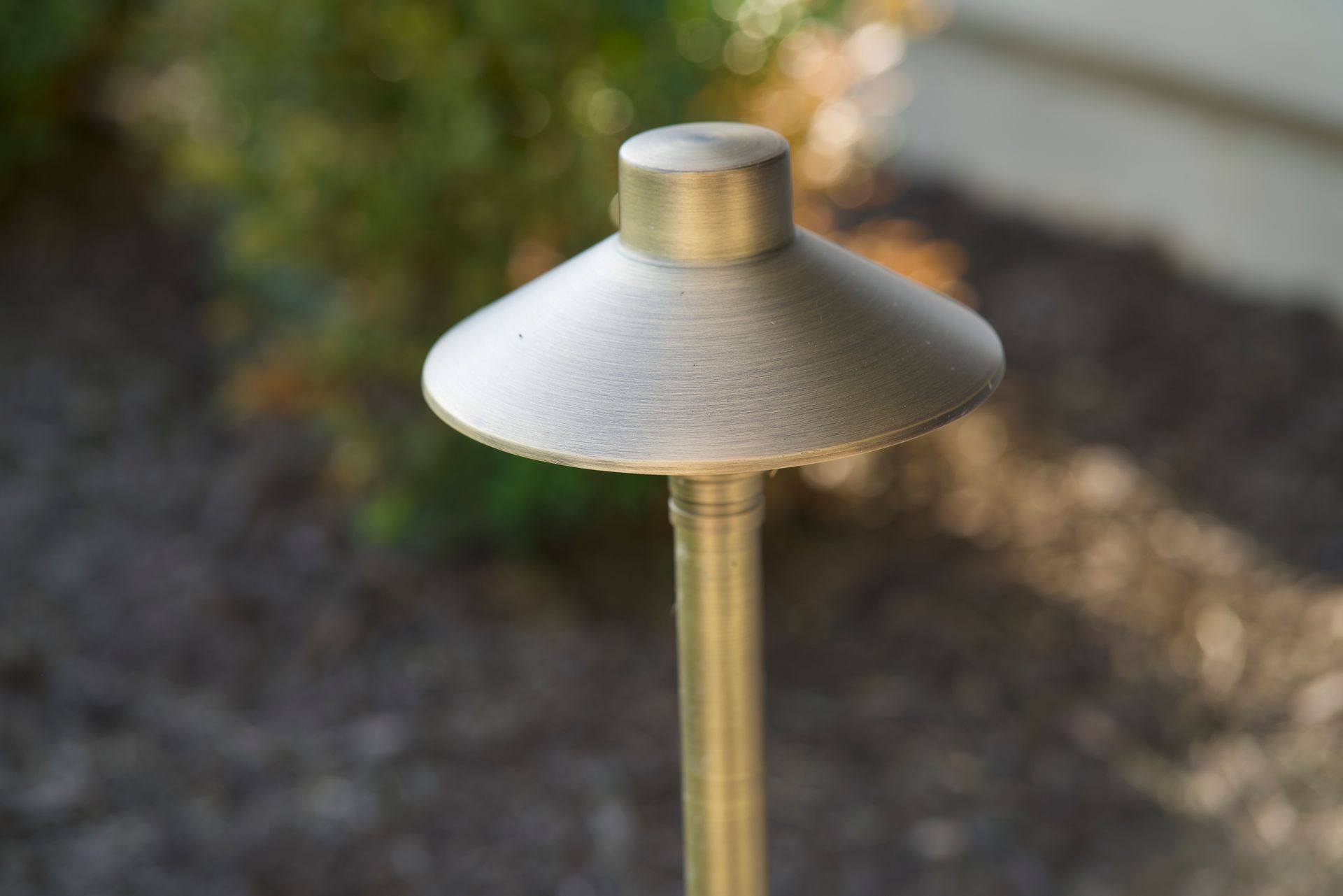
When you invest in creating a stunning outdoor space, whether it’s a beautifully landscaped garden, a sleek patio, or a backyard hosting space, you’re crafting a vision for both aesthetics and functionality. But have you thought about how you’ll enjoy that space once the sun sets? Too often, homeowners overlook the transformative power of lighting, thinking of it as an unnecessary luxury rather than a smart addition. However, outdoor lighting is more than just a decorative element. It’s an investment in extending the usability, safety, and overall impact of your landscape. The Nighttime Landscape: Untapped Potential Think of your newly designed landscape as an extension of your living space. During the day, you enjoy the full vibrancy of your garden’s flowers, your patio’s sleek furniture, and the overall ambiance of your outdoor design. But once night falls, the space can quickly become underutilized. Without lighting, your outdoor investment is limited to daylight hours. A beautiful space by day could feel empty, unused, and even unwelcoming after dark. Outdoor lighting can change all of that. By strategically placing lights throughout your landscape, you extend the hours you can use the space, allowing you to enjoy the beauty of your surroundings from dusk until dawn. Whether you’re hosting a gathering, enjoying a quiet evening with family, or simply relaxing outside with a book, lighting helps you get the most out of your investment - day and night. Practical Benefits of Lighting While the aesthetic appeal of outdoor lighting is undeniable, the practical benefits are equally important. Here’s why lighting should be part of your landscape design: 1. Increased Safety and Security One of the first concerns homeowners have when considering lighting is its impact on safety. Well-lit pathways, stairways, and entryways reduce the risk of accidents, ensuring that you and your guests can move around your outdoor spaces safely, even in the dark. Lighting also has an important role in home security. Exterior lighting can deter potential intruders by eliminating dark spots that might otherwise provide cover. Motion-activated lights near entrances or along fences add an extra layer of protection, alerting you and your neighbors to activity around your home. 2. Enhanced Functionality for Nighttime Gatherings Imagine hosting a dinner party or a casual get-together with friends or family, only to have your guests struggle to find their way around in the dark. Lighting makes your outdoor spaces not only more inviting but also more functional. Lighting elements can help create a cozy and welcoming atmosphere, ensuring that your outdoor space is as comfortable and enjoyable after the sun sets as it is during the day. 3. Create a New Perspective of Your Landscape Landscape lighting isn’t just about visibility—it’s about adding a whole new dimension to your outdoor space. Lights can highlight the natural beauty of your landscape in a way that transforms the entire experience. By illuminating trees and architectural features, you can create striking shadows and a play of light that adds depth and drama to your garden or patio. Soft, warm lighting can make the space feel inviting, while cooler lights create a modern, crisp look. The right lighting design emphasizes your landscape’s best features, offering a new perspective on your outdoor space every evening. 4. Boost Curb Appeal and Property Value Quality lighting can increase the curb appeal of your home, making it look more inviting from the street and enhancing the visual impact of your landscaping. Thoughtfully placed lights help define your property’s boundaries, accentuating the overall design and making it stand out, whether it’s the glow of path lights or the soft shine on a decorative water feature. Moreover, investing in outdoor lighting can increase the long-term value of your home. Homes with well-lit, professionally designed landscapes are often viewed as more appealing, making them attractive to potential buyers. In fact, a recent survey found that homes with appealing outdoor lighting had higher resale value, of up to 20% more than those without. Creating the Right Lighting Design for Your Landscape So, how can you make sure your outdoor lighting complements your landscape? Thoughtful planning and design are key to achieving a cohesive and functional look. Here are a few tips to consider: 1. Start with the Basics: Path and Step Lights For safety and navigation, start by installing lights along pathways and stairways. These lights illuminate the ground, guiding guests safely from one area to another. Path lights come in a variety of styles and can be placed along garden paths, driveways, and even near your front door. Incorporating step lights along stairways or elevated decks ensures that every area is easy to navigate. These simple additions immediately enhance safety without detracting from your landscape design. 2. Use Accent Lighting to Highlight Features Outdoor lighting can also be used to accentuate the most beautiful or striking elements of your landscape. Whether it's a tree or planting, a beautiful sculpture, or a decorative garden feature, accent lighting draws attention to those key elements. Uplighting, where lights are placed at the base of trees or other features and shine upward, creates dramatic shadows and highlights. Downlighting, from trees or trellises, mimics the natural moonlight effect and bathes your space in a soft, soothing glow. 3. Add Layers with Lighting Zones A key to a well-designed landscape lighting plan is creating different zones of light, each with its own purpose. This layered approach ensures that your space has both function and visual interest. Some areas should be brightly lit for safety or practical use (e.g., walkways or the front porch), while others may require softer, ambient lighting to create a relaxed atmosphere (e.g., around seating areas or garden beds). The Benefits of Professional Landscape Lighting While DIY lighting projects can be fun, a professional lighting design ensures that your landscape will look its best. An expert landscape lighting company, like Alfresco Landscapes, can help you create a design that highlights your property’s strengths, improves safety, and complements your overall landscape vision. Professional lighting designers understand how to balance different types of lighting and ensure that the lights are positioned to enhance both the function and beauty of your outdoor space. They can also recommend energy-efficient lighting solutions and provide expert advice on the best fixtures, finishes, and designs for your home. Take the Next Step: Invest in Your Outdoor Space Don’t let your beautiful outdoor space sit in the dark when it could be bringing joy and beauty into your life long after the sun sets. With the right lighting, your landscape can be more functional, safer, and more visually stunning—night and day. If you’re ready to enhance your landscape with lighting, reach out to Alfresco Landscapes for a consultation. Our expert team will work with you to design a custom lighting plan that brings your outdoor vision to life. Whether you're creating a new landscape or looking to enhance an existing space, we’re here to help you enjoy your outdoor living area to its fullest potential.
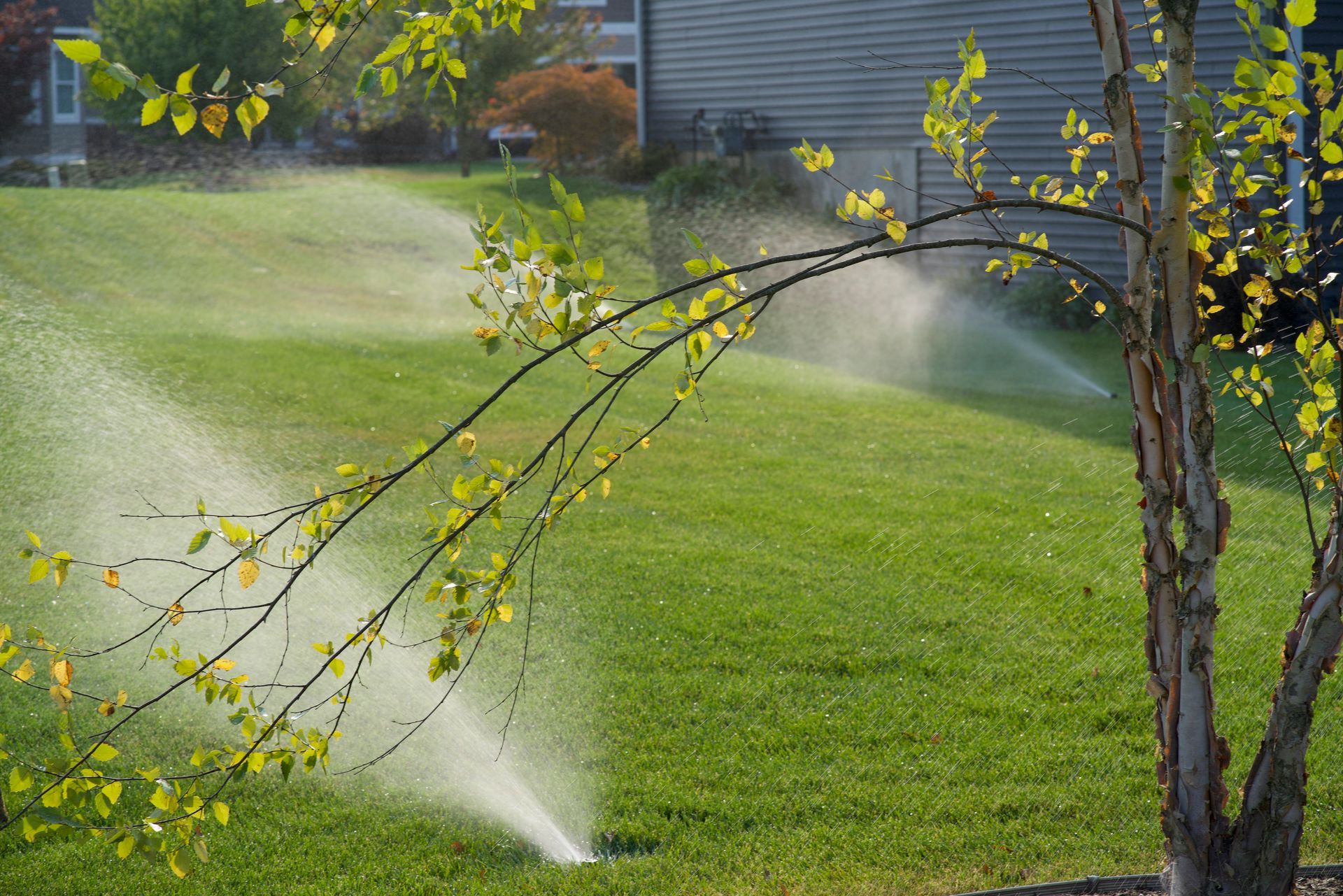
When designing a landscape, it’s easy to get caught up in the visual appeal—lush green lawns, vibrant flowers, and perfectly trimmed shrubs. But there’s one thing that is necessary to help your investment thrive: water. Keeping your landscape healthy and beautiful requires a steady supply of water, but if you’re relying on city water or an older irrigation system, you might be wasting both water and money. Fortunately, advancements in irrigation technology have introduced a more efficient, cost-effective way to water your landscape. Smart irrigation controllers are transforming how homeowners care for their lawns and gardens, offering a solution that not only saves you money but also helps the environment. Let’s explore how smart irrigation systems work and why they’re a smart investment for your West Michigan home. The Problem: Wasting Water, Wasting Money It’s easy to underestimate how much water your landscape needs, especially in Michigan, where summers can be hot and dry, and rainfall can be unpredictable. A traditional irrigation system, set to water on a fixed schedule, doesn’t account for changes in weather or soil moisture levels. As a result, you might be overwatering during a rainy week or under-watering during a particularly hot spell. This lack of flexibility not only harms your plants but also inflates your water bills. If you’re connected to city water, the cost of keeping your landscape properly irrigated can quickly add up, especially in the summer months when your system is running the most. And despite spending all that money, your lawn may not be getting the water it truly needs. Smart Irrigation Systems Smart irrigation systems help combat these problems. A smart irrigation system is designed to make your watering process more efficient by adapting to the weather, the specific needs of your landscape, and even the moisture levels in your soil. These systems use weather data and moisture sensors to determine the optimal amount of water required, ensuring that your lawn and garden receive just the right amount - no more, no less. At first glance, you might wonder if the investment in smart irrigation is worth it. After all, it can seem like a bit of an upgrade compared to your traditional system. But here’s the truth: it’s an investment that can pay off in the long run by saving you both time and money. How Smart Irrigation Works If you’re ready to make your landscape smarter, here’s a simple three-step plan to get started: Consultation & Design: Our team will assess your landscape’s specific watering needs and design a smart irrigation system tailored to your property. We’ll take into account the type of plants, soil, and the overall size of your yard to ensure the system is customized to work perfectly for your home. Installation: Once we’ve designed your system, we’ll handle the installation. Smart irrigation systems are easy to integrate into existing landscapes, and we’ll ensure everything is set up properly so you can start enjoying the benefits right away. Monitoring & Adjustment: After installation, we’ll walk you through how the system works, and you’ll have access to real-time monitoring through an app and/or web portal. Plus, the system will automatically adjust itself as weather conditions change, ensuring that your landscape is always getting the right amount of water. With a smart irrigation system in place, you won’t have to constantly worry about whether your plants are getting enough water. Instead, you can trust that your system is working efficiently behind the scenes, saving you time and effort. Enjoy a Healthier, More Beautiful Home When you invest in a smart irrigation system, you’ll experience several key benefits: Healthy, Thriving Plants: Your lawn, plants, and garden will receive consistent, precise watering, leading to better growth, fewer stress-related issues, and a healthier landscape overall. Lower Water Bills: Smart irrigation ensures that water is used efficiently, cutting down on waste and reducing your overall water consumption. This can result in significant savings on your water bills, especially during Michigan’s hot summers when your system is running most often. Less Time Spent on Maintenance: A smart irrigation system takes the guesswork out of watering. With automated schedules and adjustments, you won’t have to spend your free time manually changing settings or checking for leaks. It’s all handled for you. In addition to these practical benefits, your investment in smart irrigation can boost your home’s curb appeal and overall value, making it a wise choice for both the present and the future. Ready to take control of your landscape’s water usage and start saving money? The best time to invest in a smart irrigation system is during the design phase of your landscape project. That way, you can seamlessly integrate a system that meets your needs from the start. Don’t wait for the next water bill to remind you of the inefficiency of your current system. Contact us today to schedule a consultation and learn more about how smart irrigation can transform your outdoor space.
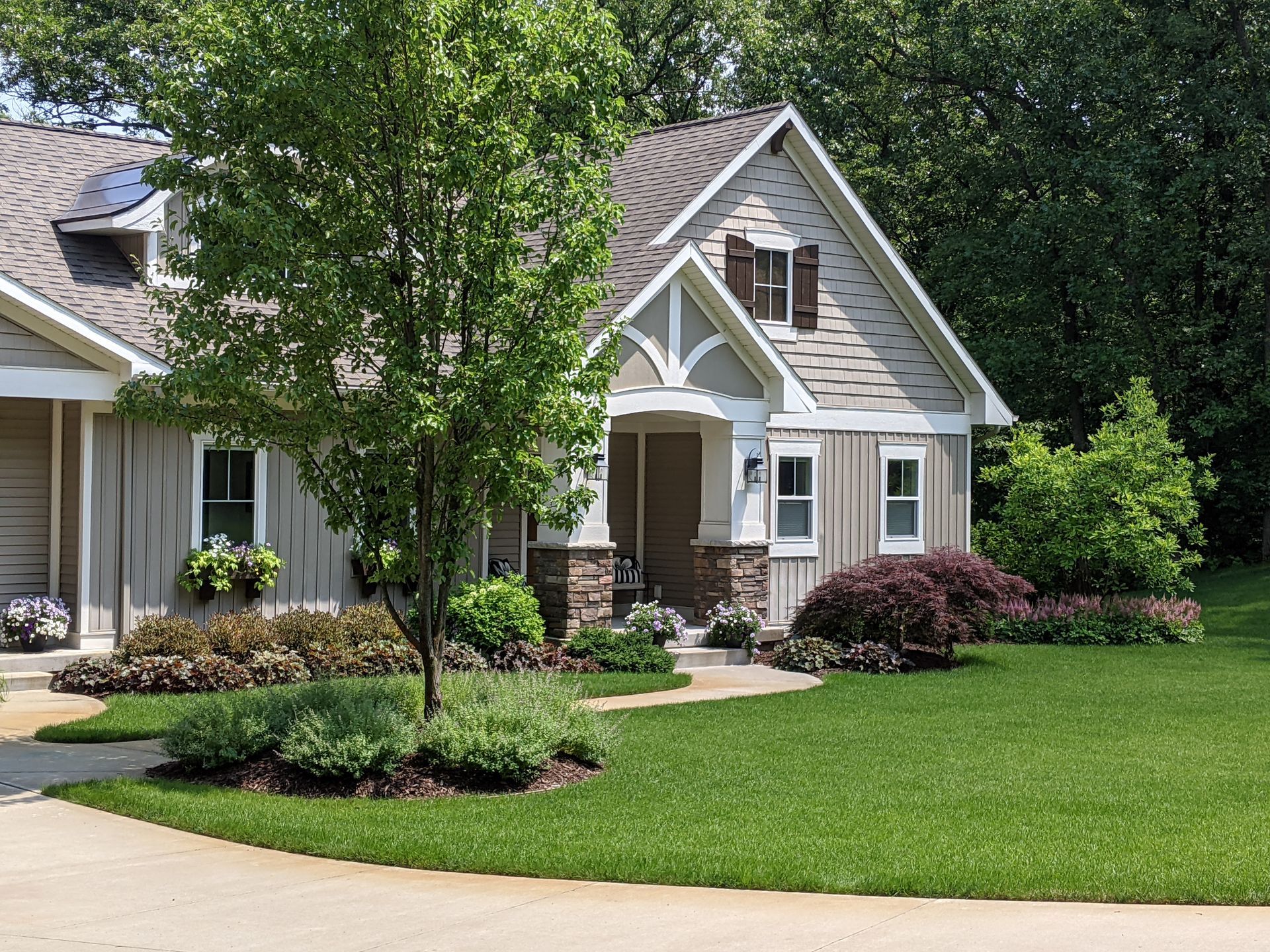
When you create a beautiful landscape, it is important to keep the space healthy so that it thrives for years to come. Just as the foundation of a house ensures its stability, aftercare ensures your landscape stands the test of time, keeping it vibrant, beautiful, and functional. After all, the beauty of your outdoor space depends on its ongoing health and maintenance, and that’s where post-installation care comes in. Why Landscape Maintenance Matters A landscape isn’t a one-time project; it’s an investment that continues to evolve and grow. Landscape maintenance is the key to making sure your outdoor space remains as stunning as the day it was installed. Proper maintenance, seasonal adjustments, and timely repairs not only protect your investment but also ensure that your landscape continues to enhance the look and value of your property. Without regular attention, even the best-planned landscapes can eventually show signs of wear and overgrowth, affecting their overall health and appearance. What Landscape Maintenance Includes Your landscape may need a variety of maintenance over the changing seasons. This care can include: Watering and Irrigation Plants and grass need consistent watering to thrive. During the initial stages after installation, proper irrigation is crucial to establishing roots. A well-designed irrigation system can help, but it's essential to monitor it regularly to ensure it’s functioning efficiently. Don’t forget to adjust watering schedules during different seasons to match the needs of your plants as too much water and not enough water can be equally detrimental to your plantings. Pruning and Trimming Plants, shrubs, and trees need trimming to promote healthy growth and maintain their shape. Pruning is particularly important during the transition seasons; spring and fall. This also helps prevent overgrowth and keeps your outdoor space looking neat. Fertilizing and Soil Health Healthy soil is the foundation of a thriving landscape. Fertilization is key to replenishing the nutrients in your soil and helping your plants and lawn grow strong. You may also need to add fresh mulch in the spring for color and vibrancy year-round as well as clean up the landscape bed edges. Choosing a Maintenance Plan: What to Look for in a Service Provider If you’re unsure where to start, or simply don’t have the time to maintain your landscape yourself, enlisting the help of a professional landscape maintenance service can make all the difference. Here’s what to look for when choosing a maintenance provider: Experience and Expertise The right landscape care team should have experience in both design and maintenance. Look for a service provider that understands the specific needs of your plants, your outdoor space, and the materials used in your landscape design. Customized Plans Every landscape is unique, so your maintenance plan should be tailored to your specific needs. Whether you have a lush garden or a functional outdoor space, a professional service should offer personalized care plans.Your maintenance plan and pricing should be customized to your property. Proactive Maintenance Look for a provider who takes a proactive approach to landscape care. Instead of just reacting to problems, a good team will anticipate needs like irrigation adjustments, seasonal pruning, routine plant bed maintenance, and fertilization. Landscape maintenance is vital to ensuring that your landscape not only survives but thrives. By investing in the right aftercare practices, you’ll preserve the beauty, functionality, and health of your outdoor space, making it a source of enjoyment for years to come. At Alfresco, we understand the importance of maintaining a healthy, beautiful landscape. Our team of experts is here to help with every aspect of landscape maintenance, from seasonal adjustments to regular maintenance schedules. Ready to give your landscape the care it deserves? Contact us today for a consultation, and let us help you maintain the beauty and health of your outdoor space.
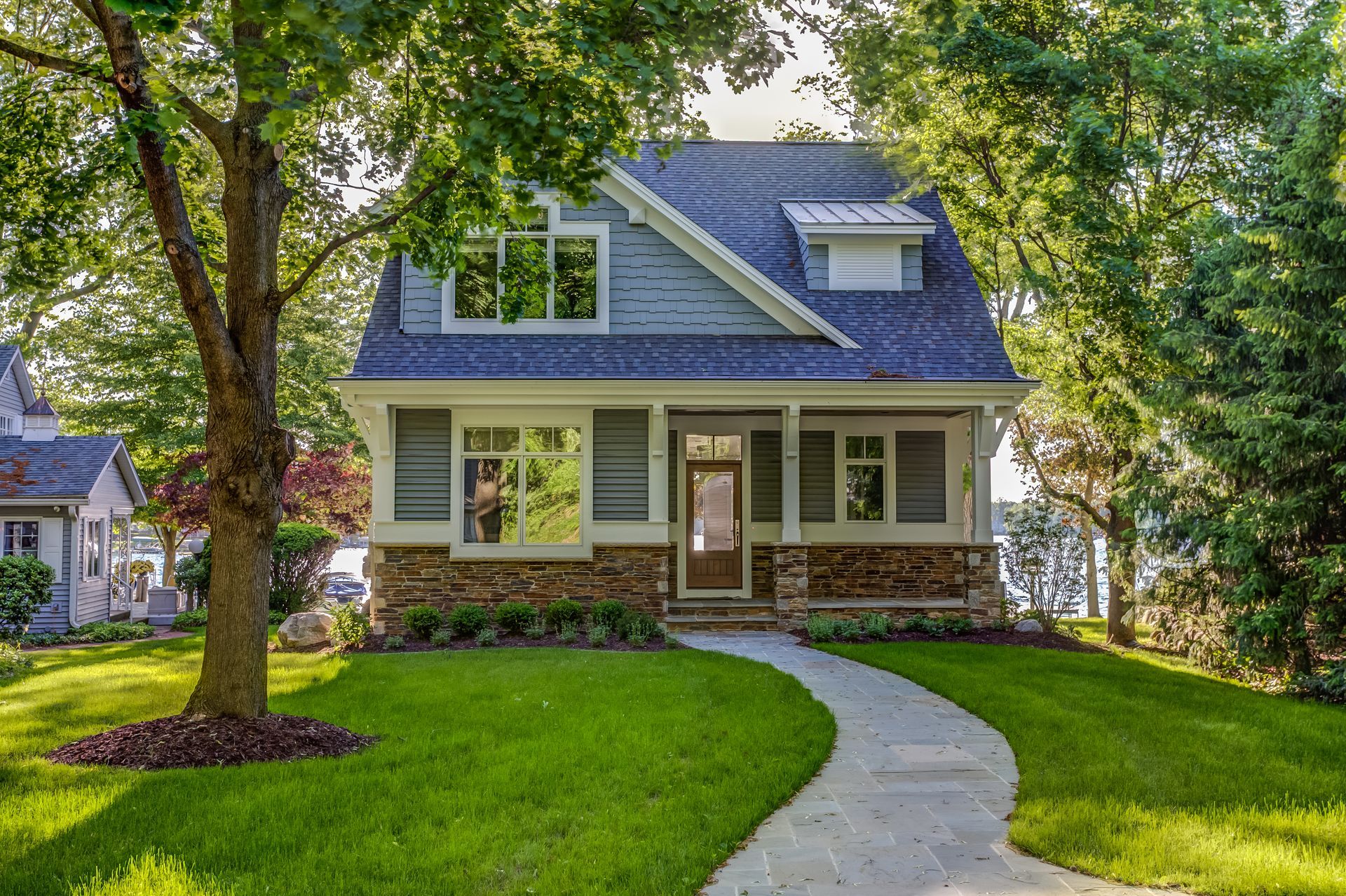
Maintaining a lush, healthy landscape takes more than just a twice-a-year effort. The changing seasons in West Michigan bring new challenges and opportunities for your outdoor space, from mowing and pruning in the summer to snow care in the winter. In this post, we’ll provide a comprehensive seasonal checklist for landscape care, outlining what to do during each season to ensure your plants and lawn stay healthy, beautiful, and well-maintained all year long. Why is Landscape Care Important? Landscape care is more than just keeping your lawn trimmed. A well-maintained landscape enhances curb appeal, boosts property value, and creates an inviting outdoor space for relaxation and enjoyment. Regular maintenance can also prevent costly repairs, overgrowth, and reduce the risk of pest and disease infestations. According to the National Association of Landscape Professionals, well-maintained landscapes can increase property value by up to 15%. By following a seasonal checklist and staying on top of tasks like pruning, fertilizing, and pest management, you’ll ensure that your outdoor space thrives through every season. Spring Landscape Care Checklist Spring is the time for rejuvenation. As the weather warms up, it’s essential to start fresh with a thorough routine to prepare your yard for the growing season ahead. 1. Maintenance Routine for Healthy Plants and Flowers In early spring, your plants are emerging from dormancy. This is the time to assess the health of your garden and start preparing your plants for the warmer months. Regular watering, fertilization, and mulching will promote strong root growth. 2. Cut Back Perennials if Not Done in Fall If you missed the fall cleanup, now’s the time to trim back any remaining perennials. This will encourage new growth and help prevent diseases. 3. Weed Management Weeds can take over quickly in the spring. It is important to consider using pre-emergent weed killers to prevent weeds from sprouting, and make sure to remove any existing weeds manually or with a targeted herbicide. 4. Clean Up Plant Beds Clear out any dead leaves, debris, or old mulch from your plant beds. This allows your plants to breathe and prevents mold and pests from taking root. It is important to cut new bed edges if you have a natural edge or to lift aluminum edging if you go that route. By doing this, you will maintain fresh looking plant beds, and keep grass from creeping into the landscape bed. 5. Fertilizing and Mulching Spring is an excellent time to fertilize your plants and apply a fresh layer of mulch. Fertilizing gives your plants the nutrients they need to grow, while mulch helps retain moisture, suppress weeds, and regulate soil temperature. Summer Landscape Care Checklist Summer heat can be hard on your landscape, but with the right care, your outdoor space can thrive. From mowing to pest management, summer requires regular attention to the weather and your plants in order to keep your landscape and lawn looking their best. 1. Mowing Keep your lawn trimmed and healthy by mowing regularly. A general rule of thumb is to never remove more than one-third of the grass height at a time, which helps maintain strong grass roots. By mowing frequently without bagging the clippings, the grass clippings will retain moisture and feed your lawn. 2. Fertilization and Weed Control In the heat of summer, your lawn and plants need a boost. A balanced fertilizer will promote lush growth, while weed control keeps invasive plants from competing with your grass and landscape beds. 3. Lawn Care In addition to mowing, watering is key during the summer months. Make sure your lawn gets about 1 to 1.5 inches of water per week. If possible, water early in the morning to reduce evaporation. 4. Pruning Summer is also a great time to prune shrubs and trees to maintain their shape and remove dead or diseased branches. Be cautious not to prune too much, as each plant variety has an optimal pruning time in the season, pruning out of season can prevent optimal blooming. 5. Checking for Pests and Diseases Regularly inspect your plants for pests such as aphids, spider mites, and slugs, which are common during the summer months. Early intervention can prevent widespread damage. Fall Landscape Care Checklist As the days cool down, fall is the time to prepare your landscape for the winter months. Taking the right steps now will ensure your plants and lawn are protected and ready to thrive again in the spring. 1. Cut Back Perennials Just like in spring, you should trim back any perennials that have finished blooming. This will prevent diseases and ensure new growth in the spring. 2. Plant Protection from Deer If deer are a problem in your area, fall is the time to take steps to protect your plants. Consider using deer-repellent sprays or installing physical barriers like fencing or netting. 3. Pest-Repellent Applications Before the cold sets in, apply a pest-repellent treatment to your plants. This will help ward off any pests looking for a warm place to hide during the winter months. 4. Pruning for Dormant Trees Pruning dormant trees in the fall ensures that you can address any issues before the winter chill sets in. Focus on removing dead or diseased branches. 5. Evergreen Care Evergreens need special attention in the fall. Apply a slow-release fertilizer and ensure they’re well-watered before the ground freezes to prepare them for the winter months. 6. Fall Leaf Clean Up Cleaning up fallen leaves from your lawn and landscape before the first snowfall is crucial. If left as a blanket, they can create an unhealthy environment for your lawn. Mulching leaves with a mower frequently throughout the fall not only clears your yard but also provides valuable nutrients back into the soil. Winter Landscape Care Checklist Winter can be tough on your landscape, but with the right care, your outdoor space can weather the season beautifully. 1. Snow Plowing A professional snow plowing service can help you maintain clear driveways and walkways during heavy snowfalls. 2. De-Icing Avoid dangerous ice buildup on your walkways by applying de-icing treatments. Use a safe, non-corrosive de-icer to protect your plants and hardscaping from damage. 3. Shoveling Shoveling your walkways is essential to keep your property safe during the winter months. Make sure to remove snow quickly to prevent ice from forming. Proper landscape care is about more than just aesthetics—it’s about preserving the health and beauty of your outdoor space year-round. By following this seasonal landscape care checklist, you'll ensure your plants and lawn remain healthy and your property retains its value. Need help with your seasonal landscape care? Contact us today for expert lawn care, landscape maintenance, and year-round services. Schedule your consultation now, and let us help you create a beautiful, healthy landscape all year long.
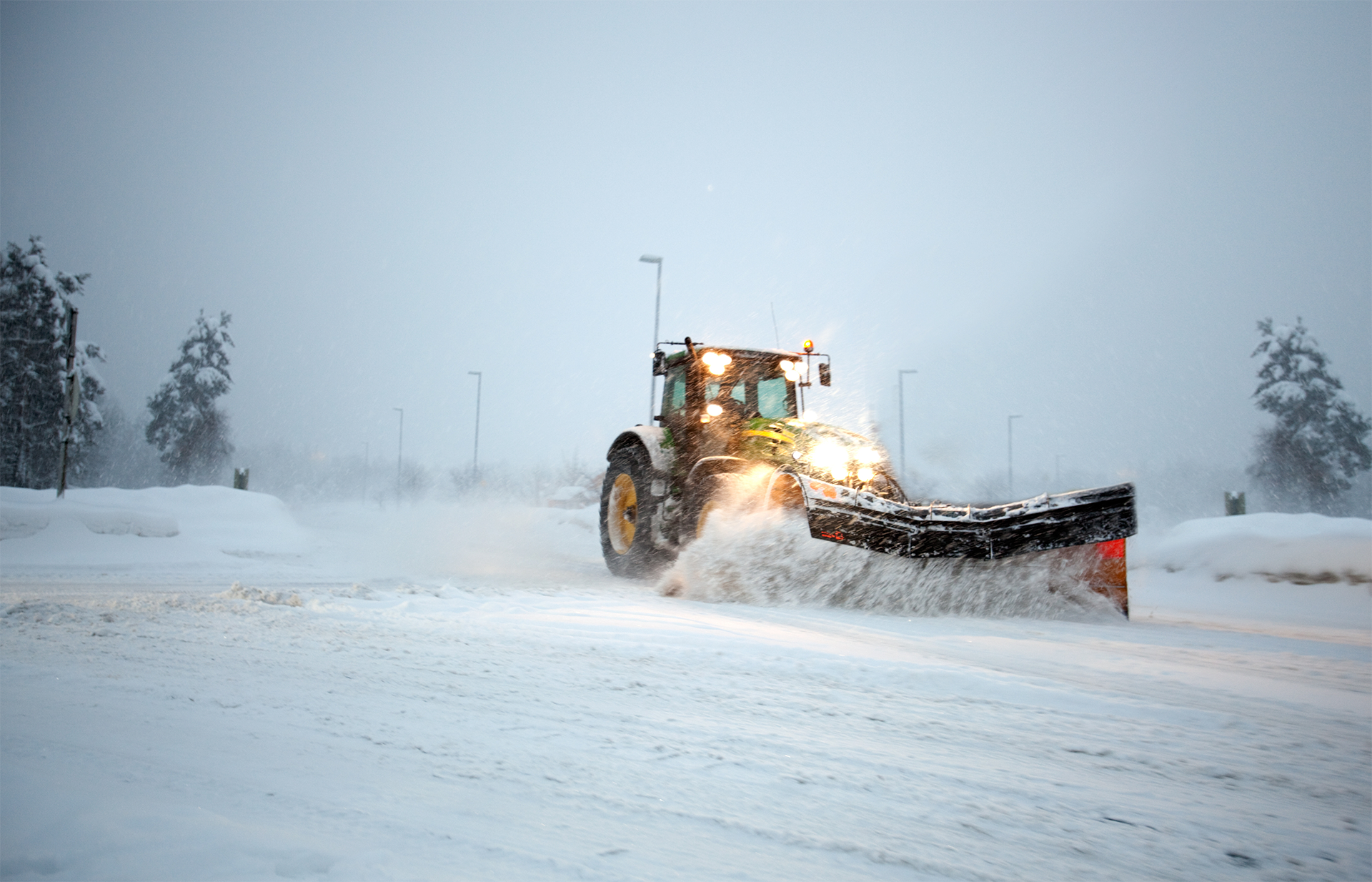
Winter in West Michigan is no joke. Snowstorms, freezing temperatures, and icy conditions can make your driveway and sidewalks treacherous. To keep our homes safe, we rely on salt and deicing products to prevent slips and falls. However, these winter salts, while effective at melting ice, can do a lot of damage to your lawn and driveway. In this post, we’ll explore how winter salt affects your landscaping, how to mitigate the damage, and what you can do to repair salt-stressed areas after a rough season. Why Salt is Harmful to Lawns, Driveways, and Sidewalks in West Michigan The Science of Salt Damage Winter salt (sodium chloride or rock salt) works by lowering the freezing point of water, which helps prevent ice from forming on your driveway and sidewalks. While it’s highly effective for ice control, the salt often gets carried onto lawns and landscaped areas, damaging grass and plants in the process. Here's how salt affects different surfaces: Lawns: Salt dehydrates the soil, leading to plant desiccation. It also increases soil salinity, which can make it harder for your grass to absorb water and nutrients. Over time, the grass weakens and dies, creating bare spots in your yard. Driveways & Sidewalks: The freezing and thawing caused by salt can lead to cracking and degradation of concrete, asphalt, and other hard surfaces. Salt also accelerates the corrosion of metal surfaces, such as vehicles, fences, and railings. W est Michigan’s Winter Climate & Salt Usage West Michigan's winter climate makes salt use almost unavoidable. With an average annual snowfall of over 70 inches in cities like Grand Rapids, salt and deicing products become essential for maintaining safety. However, Michigan’s cold, wet winters make it particularly challenging to manage salt runoff. Heavy snowfalls, followed by quick freezes, often lead to over-salting and eventual damage to local ecosystems. In fact, Michigan uses an estimated 500,000 tons of salt annually for road treatment, much of which ends up on lawns, streets, and natural areas. How to Mitigate Salt Damage in West Michigan While salt is necessary for winter safety, there are ways to mitigate its harmful effects on your property. Here are a few strategies to minimize salt damage: 1. Use Salt Alternatives or Reduce Salt Usage Alternatives: Consider using eco-friendly deicing products such as calcium magnesium acetate (CMA), potassium chloride, or sand. These alternatives are less damaging to your plants and harder surfaces. Though they may be slightly more expensive, they are less likely to harm your landscape in the long run. Strategic Application: Instead of salting every inch of your driveway or sidewalk, focus on high-traffic areas. Using salt sparingly reduces the total runoff and minimizes potential damage to your lawn and hardscapes. 2. Keep Your Lawn Clean Rinse Off Salt: After a snowstorm, brush or rinse off any salt that has accumulated on your lawn, driveway, or sidewalk. Sweep Instead of Shovel: If possible, use a broom or a shovel with a rubber edge to remove snow and ice rather than spreading large amounts of salt. This will limit how much salt ends up on your grass or landscaping. Repairing Salt Damage to Lawns, Driveways, and Sidewalks After a season of heavy snow and salting, it’s time to repair the damage. Here’s how to restore your lawn, driveway, and sidewalks to their former glory: 1. Repairing Lawns Affected by Salt Damage Reseed Bare Spots: Once the weather warms up, reseed any damaged areas. Make sure to use a seed variety that is suitable for Michigan’s climate, such as Kentucky bluegrass or fescue. These varieties are cold-tolerant and resistant to environmental stresses. Soil Amendment: Amend the soil with compost and organic matter to improve its structure and water retention. This will help your lawn recover and reduce the impact of salt in the future. Apply a Layer of Mulch: In areas where plants are suffering, adding a layer of mulch can help insulate the roots and prevent further dehydration caused by salt. 2. Repairing Driveways and Sidewalks Seal Cracks and Joints: Salt can cause cracks and chips in concrete or asphalt. After the thaw, inspect your driveways and sidewalks for damage and fill any cracks with appropriate sealants. Reseal Concrete: Consider resealing concrete surfaces every few years to protect against the corrosive effects of salt. Sealant will create a barrier between the salt and your concrete, reducing long-term damage. Protect Your Landscape This Winter and Beyond Winter salt damage is an unfortunate reality in West Michigan, but with proper planning, you can protect your lawn, driveway, and sidewalks. At Alfresco, we use alternative deicing products, specifically liquid de-icer, to minimize the risks of damage to our client’s driveways, sidewalks, yards, and plants. If you would like to utilize our winter services, contact us today. If salt damage has already occurred, we are happy to help you take action in the spring with proper lawn care, reseeding, and soil treatment. Need help maintaining your landscape through Michigan’s harsh winters? Contact Alfresco Landscapes today for advice, salt damage repair services, and winter solutions. Let’s keep your yard healthy and beautiful all year round.
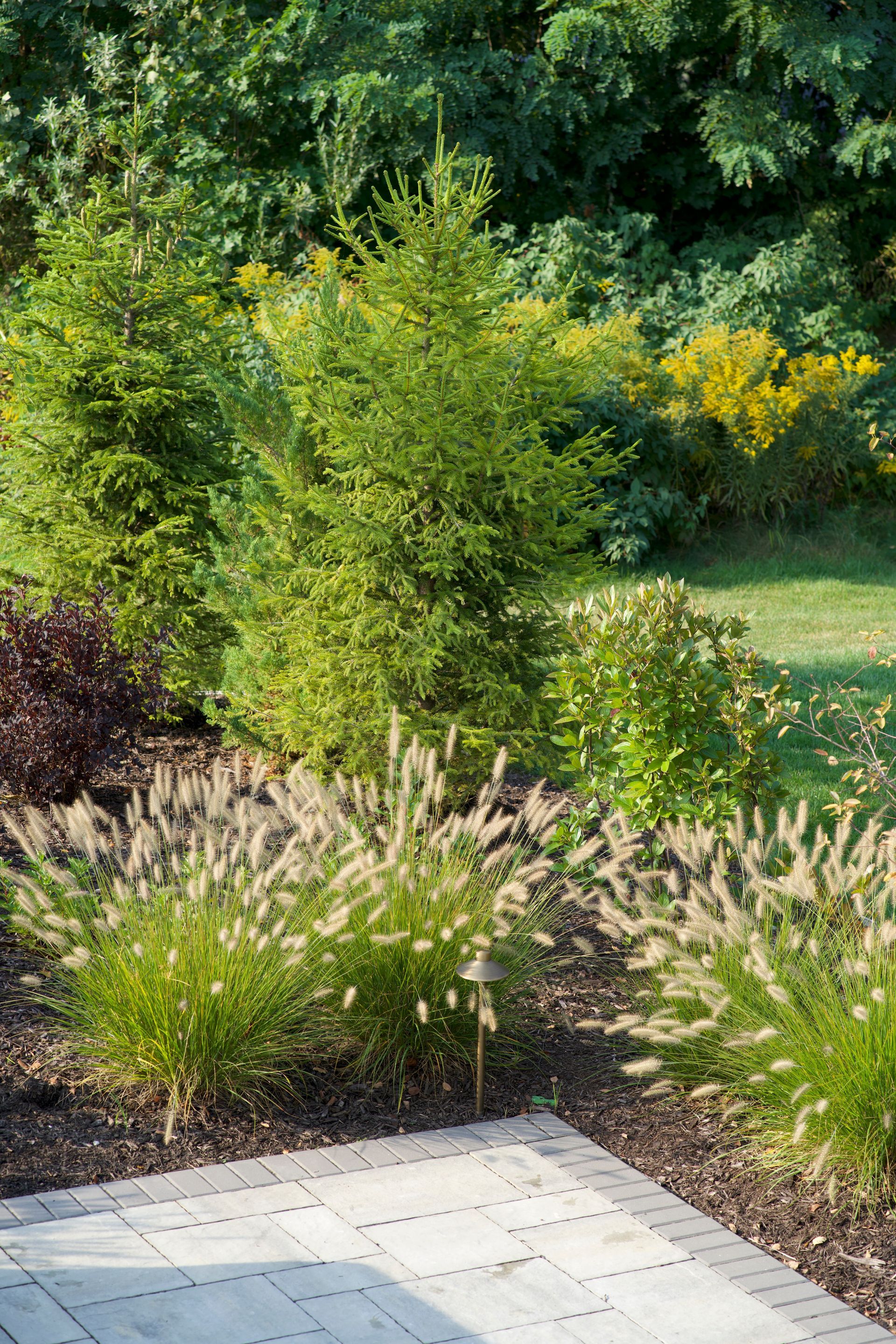
When you create a beautiful landscape, it is important to keep the space healthy so that it thrives for years to come. Just as the foundation of a house ensures its stability, aftercare ensures your landscape stands the test of time, keeping it vibrant, beautiful, and functional. After all, the beauty of your outdoor space depends on its ongoing health and maintenance, and that’s where post-installation care comes in. Why Landscape Maintenance Matters A landscape isn’t a one-time project; it’s an investment that continues to evolve and grow. Landscape maintenance is the key to making sure your outdoor space remains as stunning as the day it was installed. Proper maintenance, seasonal adjustments, and timely repairs not only protect your investment but also ensure that your landscape continues to enhance the look and value of your property. Without regular attention, even the best-planned landscapes can eventually show signs of wear and overgrowth, affecting their overall health and appearance. What Landscape Maintenance Includes Your landscape may need a variety of maintenance over the changing seasons. This care can include: Watering and Irrigation Plants and grass need consistent watering to thrive. During the initial stages after installation, proper irrigation is crucial to establishing roots. A well-designed irrigation system can help, but it's essential to monitor it regularly to ensure it’s functioning efficiently. Don’t forget to adjust watering schedules during different seasons to match the needs of your plants as too much water and not enough water can be equally detrimental to your plantings. Pruning and Trimming Plants, shrubs, and trees need trimming to promote healthy growth and maintain their shape. Pruning is particularly important during the transition seasons; spring and fall. This also helps prevent overgrowth and keeps your outdoor space looking neat. Fertilizing and Soil Health Healthy soil is the foundation of a thriving landscape. Fertilization is key to replenishing the nutrients in your soil and helping your plants and lawn grow strong. You may also need to mulch in the spring for color and vibrancy year-round. Choosing a Maintenance Plan: What to Look for in a Service Provider If you’re unsure where to start, or simply don’t have the time to maintain your landscape yourself, enlisting the help of a professional landscape maintenance service can make all the difference. Here’s what to look for when choosing a maintenance provider: Experience and Expertise The right landscape care team should have experience in both design and maintenance. Look for a service provider that understands the specific needs of your plants, your outdoor space, and the materials used in your landscape design. Customized Plans Every landscape is unique, so your maintenance plan should be tailored to your specific needs. Whether you have a lush garden or a functional outdoor space, a professional service should offer personalized care plans. Proactive Maintenance Look for a provider who takes a proactive approach to landscape care. Instead of just reacting to problems, a good team will anticipate needs like irrigation adjustments, seasonal pruning, and fertilization. Landscape maintenance is vital to ensuring that your landscape not only survives but thrives. By investing in the right aftercare practices, you’ll preserve the beauty, functionality, and health of your outdoor space, making it a source of enjoyment for years to come. At Alfresco, we understand the importance of maintaining a healthy, beautiful landscape. Our team of experts is here to help with every aspect of landscape maintenance, from seasonal adjustments to regular maintenance schedules. Ready to give your landscape the care it deserves? Contact us today for a consultation, and let us help you maintain the beauty and health of your outdoor space.
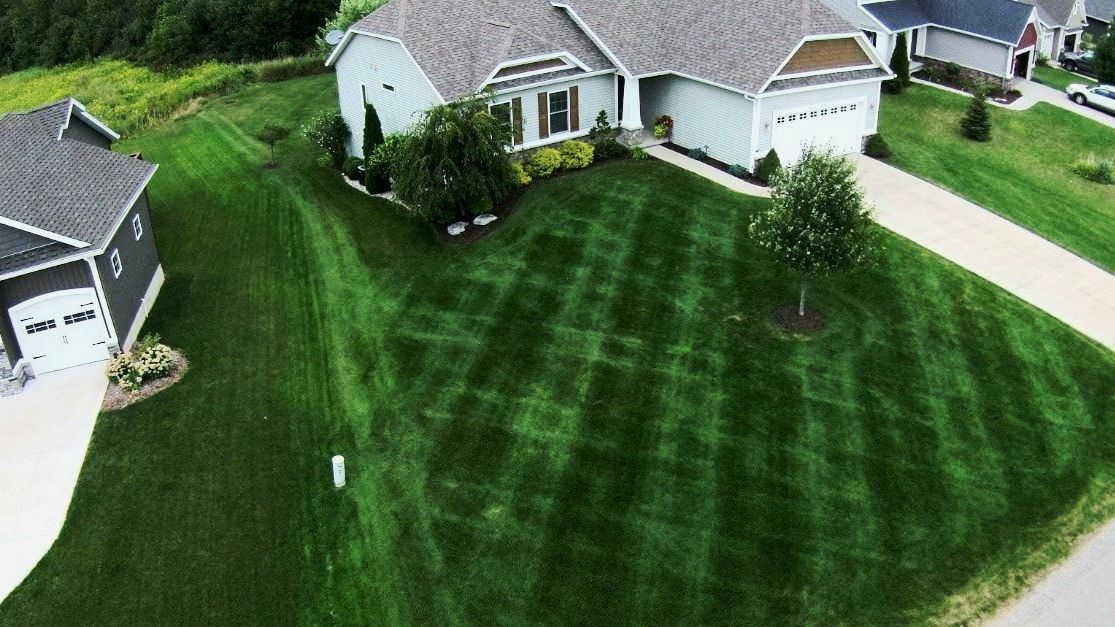
Mulching is one of the best ways to keep your lawn healthy and reduce yard work. While many people associate mulch with the wood chips or bark used in flower beds, mulching can also refer to the practice of mowing and grinding up grass clippings and fallen leaves and leaving them on your lawn for the pieces to settle into the turf soil. This simple step provides significant benefits for your yard's health and helps improve soil quality naturally. In this post, we’ll clarify what mulching means when it comes to lawn care, why it's important, and when to mulch for the best results. What is Lawn Mulching? In the context of lawn care, mulching refers to the act of mowing and finely chopping up your grass clippings and fallen leaves, allowing them to remain on your lawn rather than being bagged up or thrown away. This type of mulching is different from traditional garden mulch (such as wood chips or bark) used to cover flower beds, and the benefits to your lawn are great. The small, finely chopped pieces of grass and leaves break down quickly and return valuable nutrients to the soil. This process helps improve soil health and promotes a more vibrant, thriving lawn. The best part? It requires little extra effort and reduces waste by keeping organic material on your lawn. Why Lawn Mulching is Important Mulching your grass clippings and leaves can significantly improve the health and appearance of your lawn. Here's why: 1. Retains Moisture Mulched grass clippings and leaves help reduce moisture evaporation from the soil, keeping your lawn hydrated, especially during hot or dry periods. This helps conserve water and reduces the need for frequent watering, keeping your grass green and healthy. 2. Reduces Lawn Maintenance Instead of bagging grass clippings or raking up leaves, mulching them back into the lawn helps break them down naturally. Over time, these decomposed clippings and leaves add nutrients like nitrogen and carbon back into the soil, reducing your need for chemical fertilizers. 3. Suppresses Weeds A light layer of mulched grass and leaves can help suppress weed growth by blocking sunlight from reaching weed seeds. This means fewer weeds to pull and a cleaner, healthier lawn. 4. Improves Soil Health As organic matter like grass clippings and leaves decomposes, it improves the structure and fertility of your soil. The nutrients returned to the soil help your grass grow stronger and more resilient, leading to a thicker, greener lawn. 5. Acts as a Natural Fertilizer The decomposition of mulched grass clippings and leaves provide a slow-release fertilizer to your lawn, enriching the soil with essential nutrients without the need for synthetic chemicals. By mulching your grass clippings and leaves, you're not only reducing waste but also fostering a healthier, more sustainable lawn that thrives with less water, fewer chemicals, and less effort on your part. When is the Best Time to Mulch? For the best results, mulch your grass clippings and leaves regularly throughout the growing season. During the active growing season (spring through early fall), mulching your clippings each time you mow helps continuously nourish your lawn. In autumn, mulching fallen leaves can prevent them from smothering your grass while adding valuable organic matter to the soil. Need Help with Lawn Care? Ready to enhance your lawn’s health and appearance? Contact Alfresco Landscapes for expert advice on mulching and other lawn care tips to help your yard thrive. Let us help you create the lawn you’ve always wanted—beautiful, sustainable, and low-maintenance!
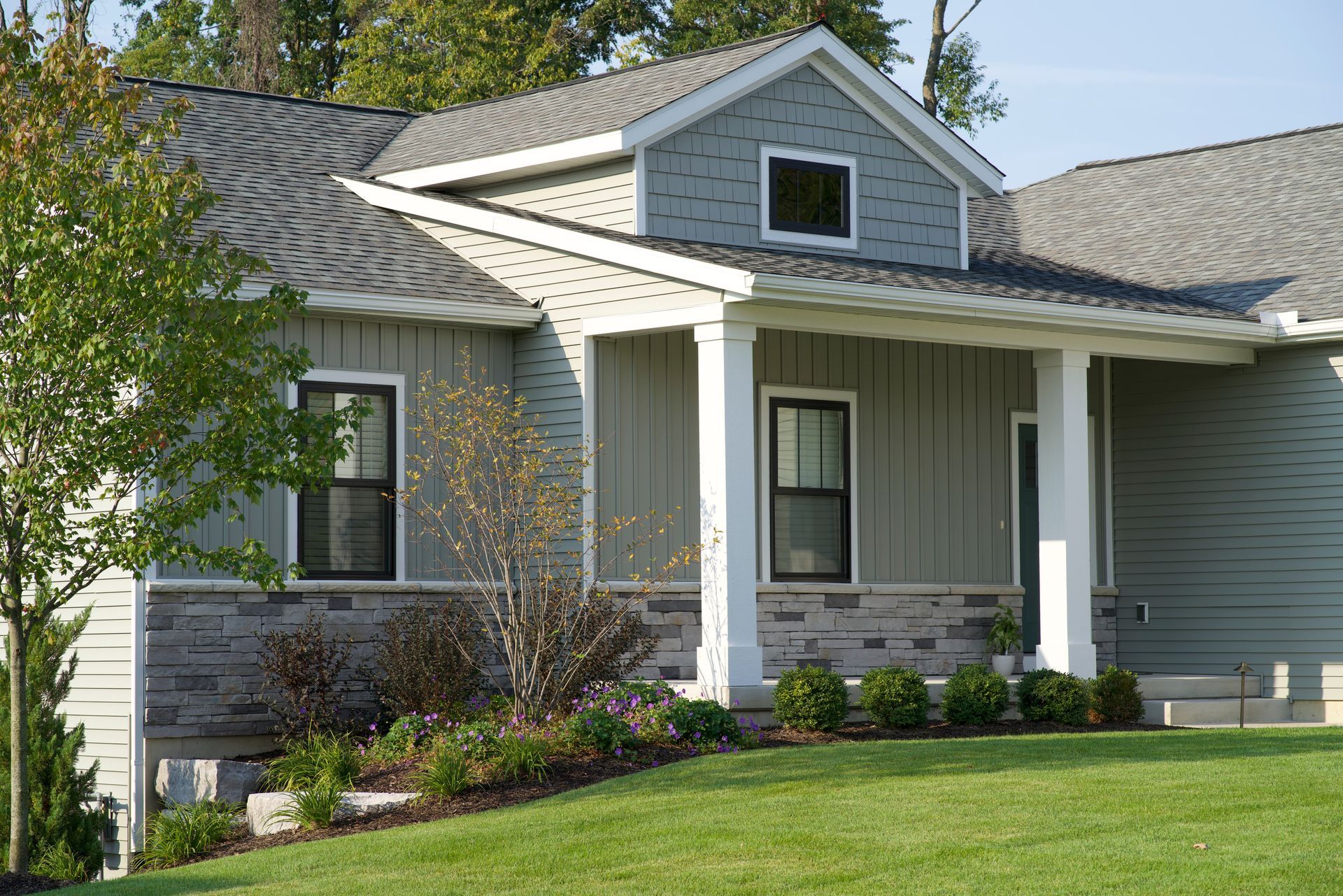
Your front yard is your chance to make a great first impression; and is the first thing visitors and passersby notice about your home. A thoughtfully designed front yard can set the tone for the entire property, enhancing both its curb appeal and functionality. Whether you’re aiming to boost your home’s value, create a welcoming atmosphere, or construct a more usable space, designing a beautiful front yard is a crucial step. In this post, we’ll explain what front yard landscaping is, why it matters, and provide actionable steps to help you create a stunning and functional outdoor space. What is Front Yard Landscaping? Front yard landscaping involves the strategic design and arrangement of elements like plants, hardscaping (such as walkways and driveways), irrigation, and lighting in the front portion of your property. The goal is to create a visually inviting and functional space that enhances the overall curb appeal of your home. Why Does Front Yard Landscaping Matter? A well-designed front yard offers several key benefits: Boosts Curb Appeal: An attractive, well-maintained front yard instantly enhances your home’s exterior, making a lasting first impression. Noise Reduction: Well-placed shrubs and trees can help absorb or block noise from streets or neighboring properties, creating a more peaceful and quiet environment around your home. Increases Property Value: Homes with well-designed landscaping can sell for 15-20% more than homes without it (Bankrate, 2023). A beautifully landscaped front yard can significantly increase your property’s market value and make it sell faster. By investing in front yard landscaping, you’re not just improving your property’s appearance—you’re creating a space that enhances your home and becomes an extension of your personal style. How to Design Your Perfect Front Yard Landscape Designing your front yard may seem like a daunting task, but by following a few simple steps, you can transform your outdoor space into something both beautiful and functional. If you're feeling overwhelmed, our team is here to guide you every step of the way. Here’s how we approach front yard landscape design: 1. Assessing Your Space and Defining Your Goals The first step in designing your front yard is understanding the space you’re working with and clarifying your goals. At Alfresco, we start with an onsite consultation to evaluate factors like the size and shape of your yard, soil conditions, the architecture of your home, and existing elements (such as trees, shrubs, and hardscaping). We’ll also discuss your vision for the space by answering key questions such as: What kind of atmosphere do you want to create? What kind of design will pair best with the style of your home? Are you seeking more privacy or security with elements like hedges, lighting, or fences? Do you have specific needs for your front yard, such as parking, gardening, or pathways? What is your budget? By understanding your vision and needs, we can create a design that aligns with your goals. 2. Creating a Custom Design Plan With your goals in mind, our team will craft a custom design tailored to your front yard. We’ll blend plants, trees, lighting and hardscaping elements to bring your vision to life. Our approach includes: Strategic plant placement: Adding color, texture, and structure throughout the growing season with flower beds, shrubs, and trees. Hardscaping: Designing functional walkways and patios that complement your home’s architecture. Outdoor lighting and irrigation: Enhancing both aesthetics and practicality by improving accessibility, protecting your investment, and ensuring your plants thrive. The goal is a balanced design that’s visually striking, functional, and sustainable. 3. Choosing the Right Plants and Materials Choosing the right plants and materials is essential for both aesthetics and durability. At Alfresco, we have deep knowledge of local plant species and materials suited to our climate and soil types. We’ll recommend options that not only look great but thrive in your environment, all while meeting your budget goals. It’s important to note that materials from local stores will not always meet the same quality standards as professional-grade landscaping materials. We’ll help you select high-quality options that are built to last. 4. Adding Personal Touches To make your front yard truly your own, we recommend adding personal touches that reflect your style. Whether it’s a fountain for added tranquility, colorful planters to showcase your favorite flowers, or seasonal decorations, we’ll help you incorporate unique elements that make your front yard feel like home. Why Choose Alfresco Landscapes? At Alfresco, we believe that every front yard has the potential to become a stunning reflection of your home and style. Our team of experienced landscapers is passionate about creating designs that are both beautiful and functional. From the initial consultation to the final touches, we’re with you every step of the way, ensuring your front yard transforms into a space you’ll love. Our expert knowledge, combined with attention to detail, guarantees a landscape that enhances the beauty of your home and meets your practical needs. Ready to Transform Your Front Yard? If you’re ready to elevate your front yard into a beautiful, functional outdoor space, Alfresco Landscapes is here to help. Contact us today for a free consultation, and let’s work together to bring your vision to life.

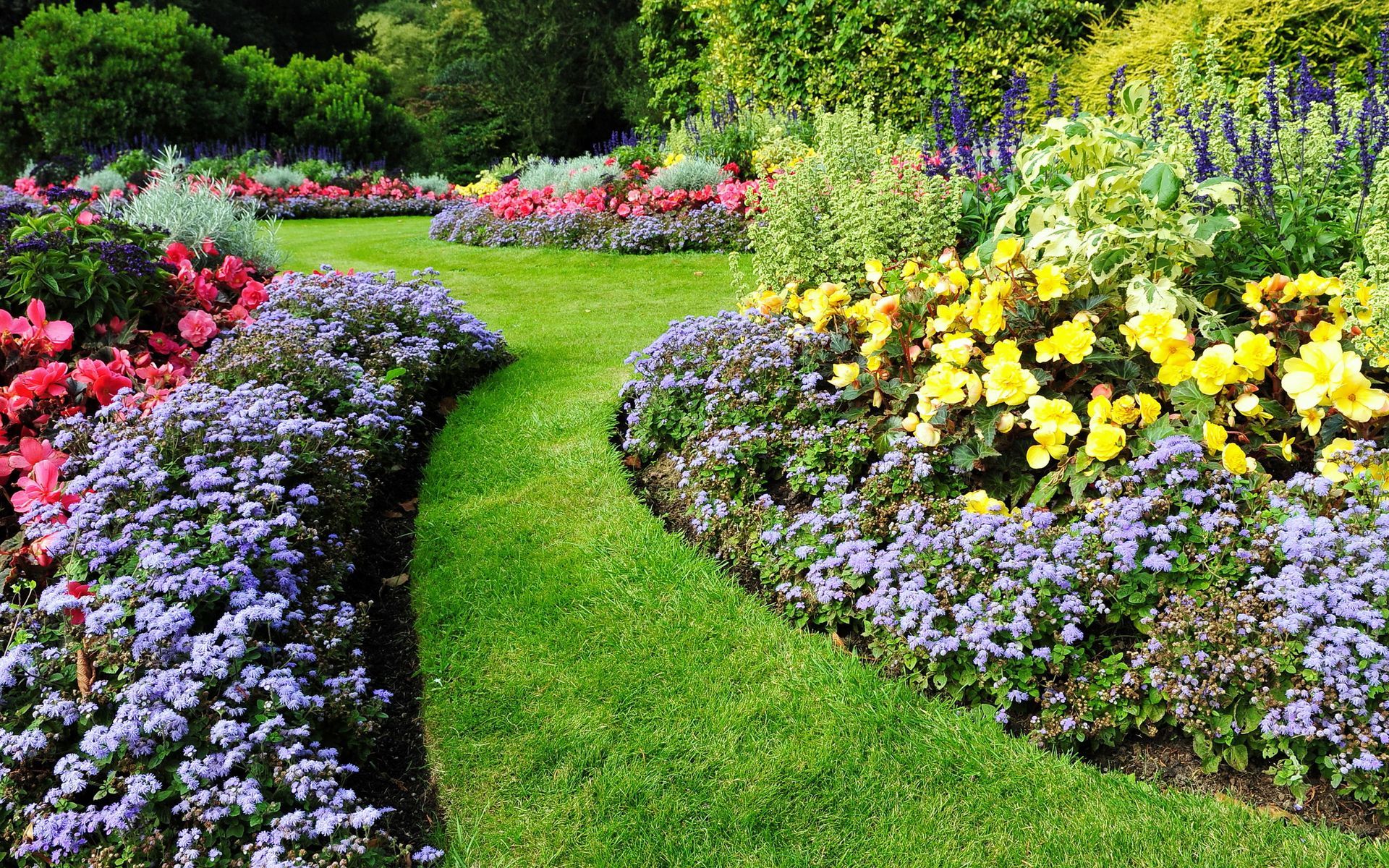
Share On: